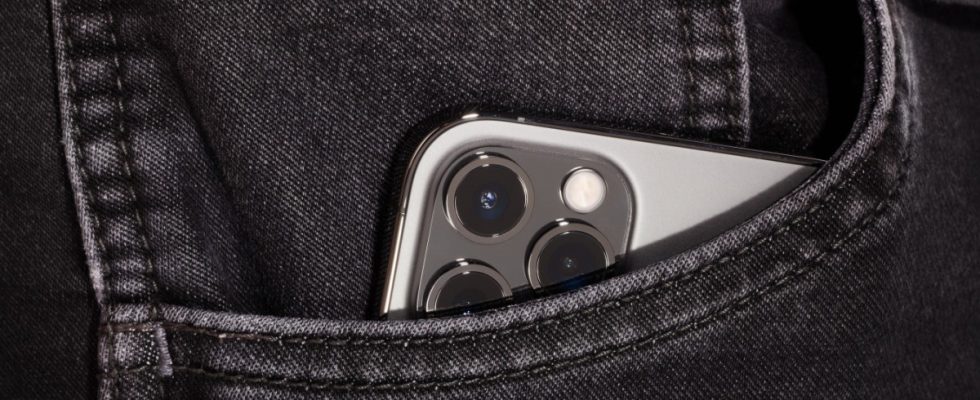Most people bundle their entire digital life in their cell phone: it is the access to social networks, where contacts are stored, documents and photos are collected, and financial transactions are carried out.
Everything on newer cell phones is often protected with so-called biometric proof of identity – i.e. a fingerprint sensor (Touch ID) or a face scanner (Face ID). But the seemingly so secure access barrier can be overcome in a very simple way: If the face scanner fails because the cell phone user may have put on sunglasses, on the iPhone a four or six-digit code is enough to unlock the cell phone.
Apple intended the code as an easy-to-use workaround. But because it’s so simple, thieves also take advantage of it: They spy – maybe in a bar, maybe on the train – how someone is typing in the code. They then steal the cell phone. All it takes is a moment of carelessness on the part of the owner.
This was particularly important in how far-reaching the consequences could be Wall Street Journal made a big issue and referred to hundreds of such cases: With the help of spied-out numerical codes, the access to the Apple ID and thus also to the iCloud could be changed within a short time. This gave the thieves access to every private detail stored on the cell phone in the form of images or documents. Accounts were also looted. And that’s not all: Since many people use the iPhone as a central password manager via the keychain function, the numerical code also provides access to all accounts on the Internet that are stored there – right up to the bank accounts. At least, unless they are additionally protected.
The short sequence of numbers for the cell phone – it is the most powerful PIN in the lives of many. And the owners have little chance of easily regaining control over their digital lives.
However, the new functions do not form an all-round, worry-free package
The reports of such events may also have alarmed Apple. In any case, a test version of the operating system has now been released on mobile devices – iOS 17.3. The main innovation: If the iPhone is used outside of an environment that is familiar to the cell phone, such as home or work, according to what is known so far, the user only has access to core areas of the cell phone via facial recognition or the fingerprint sensor.
The new protection against theft of personal data in the iPhone – so far it is only available in the beta version of iOS 17.3.
(Photo: Apple)
So if someone wants to look at a password in the keychain, delete all content or reset settings, this can no longer be done with the code as before. What’s more: If you want to change the password for your Apple ID or deactivate certain security functions while you’re on the move, there’s an additional time limit of probably one hour – Apple hasn’t confirmed the details yet. This period is intended to enable the owner of an iPhone to secure the cell phone from third-party access in the event of theft.
The new functions do not form an all-round, worry-free package, but they do secure access to the digital world much better than before. Apple speaks of a “highly developed new level of protection”, but at the same time emphasizes that thieves have not had access to the data without the code.
The regular version of iOS 17.3 will probably not be available for download until next year.

